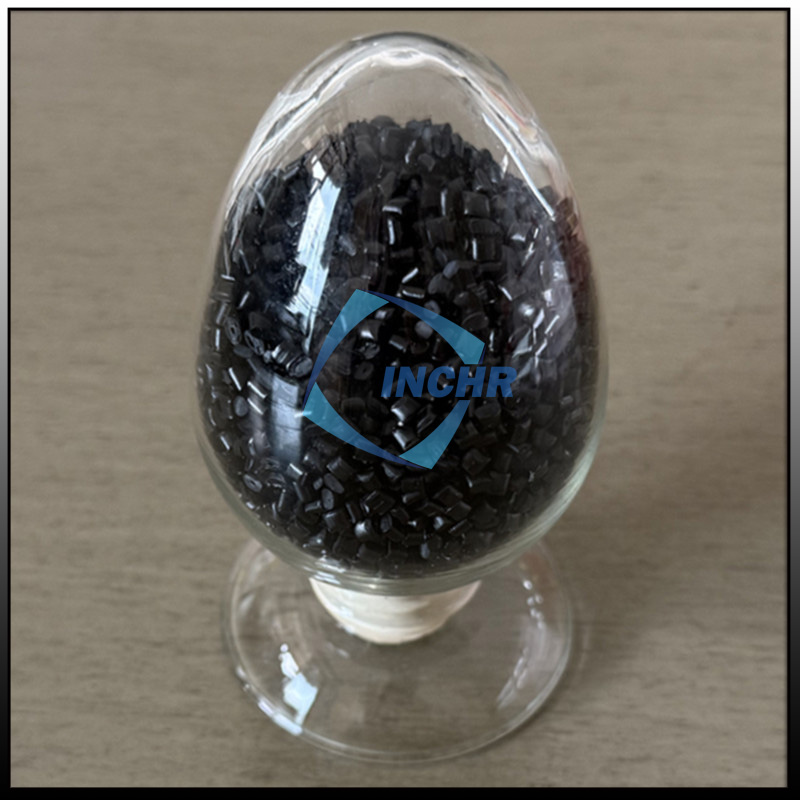Carbon Fiber Reinforced Nylon: The Sustainable Supermaterial Reshaping Modern Manufacturing
In an era where industries demand materials that balance performance, sustainability, and cost-efficiency, carbon fiber reinforced nylon (CFRN) has emerged as a frontrunner. This advanced composite, blending nylon’s adaptability with carbon fiber’s robustness, is not just a material—it’s a revolution. From reducing carbon footprints in automotive manufacturing to enabling breakthroughs in renewable energy, CFRN is redefining what’s possible. Here’s how.

Why Carbon Fiber Reinforced Nylon Stands Out: A Blend of Strength and Sustainability
CFRN is a thermoplastic composite where carbon fibers (10%–40% by weight) are embedded into a nylon matrix. Its unique value proposition lies in three core pillars:
Lightweight Powerhouse: 50% lighter than aluminum with comparable tensile strength (150–300 MPa).
Eco-Conscious Design: Recyclable matrix and compatibility with bio-based nylons.
Manufacturing Versatility: Compatible with injection molding, 3D printing, and compression molding.
Recent advancements, such as graphene-coated carbon fibers and closed-loop recycling systems, further enhance its mechanical properties and environmental appeal.
Cutting-Edge Applications Driving Industry Transformation
1. Green Energy Innovations
CFRN is accelerating the renewable energy revolution:
Wind Turbine Components: Fatigue-resistant gearbox housings that endure 20+ years of cyclic stress.
Hydrogen Fuel Cell Plates: Lightweight, corrosion-resistant bipolar plates improving H₂ production efficiency.
Solar Panel Mounts: UV-stabilized CFRN frames reducing installation weight by 35% in desert solar farms.
Case Study: Siemens Gamesa recently integrated CFRN brackets in offshore wind turbines, cutting maintenance costs by 18% due to saltwater corrosion resistance.
2. Next-Gen Automotive Solutions
EV makers leverage CFRN to overcome range anxiety and sustainability goals:
Structural Battery Enclosures: Multi-functional designs embedding cooling channels within CFRN housings.
Lightweight Chassis Parts: Suspension arms 40% lighter than steel equivalents, boosting energy efficiency.
Recyclable Interior Panels: Bio-based PA410 CFRN trims, 100% recyclable at end-of-life.
Example: Polestar’s 2025 concept car features CFRN monocoque components, slashing vehicle weight by 120 kg.
3. Smart Robotics and Automation
CFRN’s blend of lightness and precision is vital for Industry 4.0:
Collaborative Robot Arms: Reduced inertia enables faster, safer human-robot interaction.
AI-Optimized Grippers: 3D-printed CFRN tools with embedded strain sensors for adaptive grasping.
Autonomous Drone Frames: High stiffness-to-weight ratios for payload-intensive agricultural drones.
Manufacturing Breakthroughs Enhancing Carbon Fiber Reinforced Nylon Performance
1. AI-Driven Fiber Alignment
Generative design software like nTopology optimizes carbon fiber orientation during 3D printing, achieving:
25% higher impact resistance.
15% material waste reduction.
2. In-Mold Functionalization
New techniques embed conductive traces or sensors directly into CFRN parts during molding, enabling:
Self-monitoring EV battery trays.
Smart industrial tooling with real-time wear detection.
3. Low-Carbon Production Methods
Bio-Based Nylons: Arkema’s Rilsan® PA11 CFRN uses castor oil, cutting CO₂ emissions by 50%.
Recycled Carbon Fibers: ELG Carbon Fibers recovers 95% of fibers from end-of-life aerospace components.
Overcoming Challenges: Practical Solutions for Carbon Fiber Reinforced Nylon Adoption
| Challenge | Innovative Fix |
|---|---|
| High Material Costs | Agro-waste carbon fibers (e.g., lignin-based) cut costs by 30%. |
| Surface Finish Limitations | Plasma coating adds conductive/metallic finishes without machining. |
| Anisotropic Behavior | Hybrid composites with glass fiber layers balance directional strength. |
The Future of Carbon Fiber Reinforced Nylon: 3 Disruptive Trends
Self-Healing CFRN
Microvascular networks filled with healing agents autonomously repair cracks, extending part lifespan by 3x.4D-Printed Smart Structures
Humidity-responsive CFRN valves for HVAC systems that self-adopt to environmental changes.Carbon-Negative Production
Startups like CarbonCure inject captured CO₂ into nylon polymerization, creating carbon-storing CFRN.
How to Implement Carbon Fiber Reinforced Nylon in Your Projects
Partner with Specialists: Collaborate with suppliers like BASF or Toray for tailored CFRN grades.
Simulate Early: Use ANSYS or SimScale to model thermal and mechanical performance.
Design for Circularity: Prioritize disassembly to reclaim fibers for reuse.
Conclusion
Carbon fiber reinforced nylon is more than a material—it’s a catalyst for sustainable innovation. By merging unparalleled strength with eco-conscious design, CFRN addresses today’s engineering challenges while paving the way for a greener industrial future. As AI-driven manufacturing and circular economy practices evolve, CFRN will remain at the forefront of material science, empowering industries to build lighter, smarter, and cleaner.




